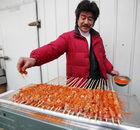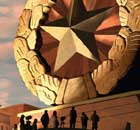Society
Loopholes in pesticide regulation
By WANG YAN and JIN ZHU (China Daily)
Updated: 2010-03-02 07:18
 |
Large Medium Small |
Time line
Poisonous growth
Jan 25 to Feb 5
Three consecutive batches of Hainan-grown cowpeas are found to contain isocarbophos residue, a highly poisonous pesticide, in a market of Wuhan, capital of Hubei province.
Feb 6
Wuhan authorities issue a letter to their Hainan counterparts for assistance in investigations, citing isocarbophos residue of 0.14-0.17 mg per kg being detected incowpea stocks.
Feb 7
Wuhanextends prohibitions on Hainan-produced cowpeas from entering its markets for three months.
Feb 21
The Wuhan agriculture bureau releases information on the issue to the media, stating that 3.5 tons of toxic cowpeas have been seized and destroyed.
Feb 24
The Ministry of Agriculture issues an urgent circular concerning the safety and monitoring of vegetable production processes in response to the latest incident.
Feb 25 to 26
Isocarbophos is detected in Hainan-grown cowpeas on sale in markets in Guangdong, Anhui and Jiangsu provinces. More provinces in the country ban sales of the produce after tests reveal toxic pesticide contamination.
Feb 26
Hainan announces nine emergency measures, including the setting up of 24-hour cowpea checkpoints at harbors and launching a comprehensive inspection on the use of pesticides.
Feb 28
Government employees who fail to stop the toxic cowpeas from entering the market will be immediately suspended from their posts, said Chen Cheng, Hainan's deputy governor.
March 1
Local media report the underground sale of highly poisonous pesticides including isocarbophos in the province, despite the Hainan government banning such sales in 2004.
China daily







